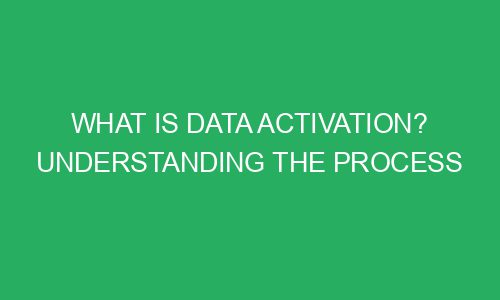society and everyday life are becoming further and further integrated with technology year after year. The data produced through technological intergration is constantly at risk from nefarious individuals with criminal intent. It is required for businesses to ensure this data is protected. Failure to protect this data may lead to legal consequence depending on the severity of the breach. Consumers who have been affected by a data breach may approach firms like Fair Credit or Sanford Heisler Sharp to assist in holding a business responsible for their failure to protect the data entrusted to them. This is something that has been in the works, so to speak, really since the birth of the internet. However, with recent advances in technology that have enabled seamless virtual operations, intersecting with the events of 2020 and 2021, the transition into a more digital economy, and society in general, saw an immediate acceleration. For years before this, though, organizations were already utilizing and analyzing big data in a variety of ways; from social media and internet browser tracking, to geo-mapping, and much much more. Since data and technology pretty much go hand-in-hand, data analytics would only become more sophisticated. Now, organizations employ data activation strategies to make the most out of their available information.
The main goal of data activation is to provide users with data-driven-information that enables them to take actions or make decisions regarding marketing, sales, communication, and other consumer-based-tasks.
Avoiding Silos; Where it All Started
Data activation arose from a need in the industry after a resurgence of centralization. In order to break down data-silos, organizations began funneling their data into warehouses. These warehouses acted as a central point which then held all of the data that organization had collected. While this solved a lot of problems, it also created a few new ones. One such issue being that centralizing all this data created limited access.
To solve the immediate issue at hand, reverse ETL became a popular solution. The basics of reverse ETL is that it’s a software designed to take that data from the central warehouse and copy it back across an organization’s entire suite of SaaS tools. This keeps the data centralized while opening up its accessibility to those who need it most.
Data activation is more than just reverse ETL and ORM synchronization, though. Data activation brings data analytics to the next level.
Shifting the Focus
In order to evolve the approach organizations take toward data analytics, the perspective first needed to shift. The focal-point of data activation is not understanding data; instead, it’s acting upon data. This seems like a simple shift, but it’s a fundamentally different approach to utilizing data from the available pools. Rather than spending an inordinate amount of time on analysis for the sake of understanding, data activation is designed to put data to use by giving users actions aimed at driving consumer behavior.
This takes marketing tactics to a new height as organizations and marketing professionals alike are able to use real-life-data to predict and even influence consumer behavior. This is also an important aspect of data activation, as it focuses heavily on creating and driving consumer actions.
Real Time Implementation
The reason data activation is able to focus on driving consumer action is partially because of its real-time capabilities. This means that users can get updated data at the moment of decision-making. Rather than operating on gut-instinct, or outdated information. This increases the rate of success that data activation sees. This is also valuable for an organization’s operations because of the way that the digital consumer mindset is wired. Because consumer engagement is such a coveted metric, and the modern attention span is oriented toward instant gratification, organizations and data analysts alike understand how consumer decisions can be made in less than a seconds time and at a moments notice.
This creates value in immediate access to pertinent data that can inform a decision, which is the exact purpose of data activation.
A Variety of Use-Cases
While data activation evolved from reverse ETL processes aimed at improving the accessibility of information across an organization’s technological architecture, data activation itself goes far beyond those humble beginnings. Reverse ETL is still at the core of many data activation softwares, but the use-cases have branched out much further leading to creating a whole suite of features and capabilities within data activation.
From consumer event syncing, to audience building, to file uploading, consumer and internal messaging, and of course ORM syncing, data activation brings action to analysis.
A Few Final Words
The future of technology is still unknown, but it’s very promising. With the advances made in recent years alone, the imagination’s the limit for where technology could be in 10, 50, 100, or even 1000 years from now. It is an ever-evolving industry that has influence throughout the entire social, economic, and environmental ecosystems. With data activation, brands and organizations have the ability to improve metrics across their entire scope of operations. This same level of data-empowered action could have implications elsewhere as well.
The data and information is available, it might be time to start acting on it.

